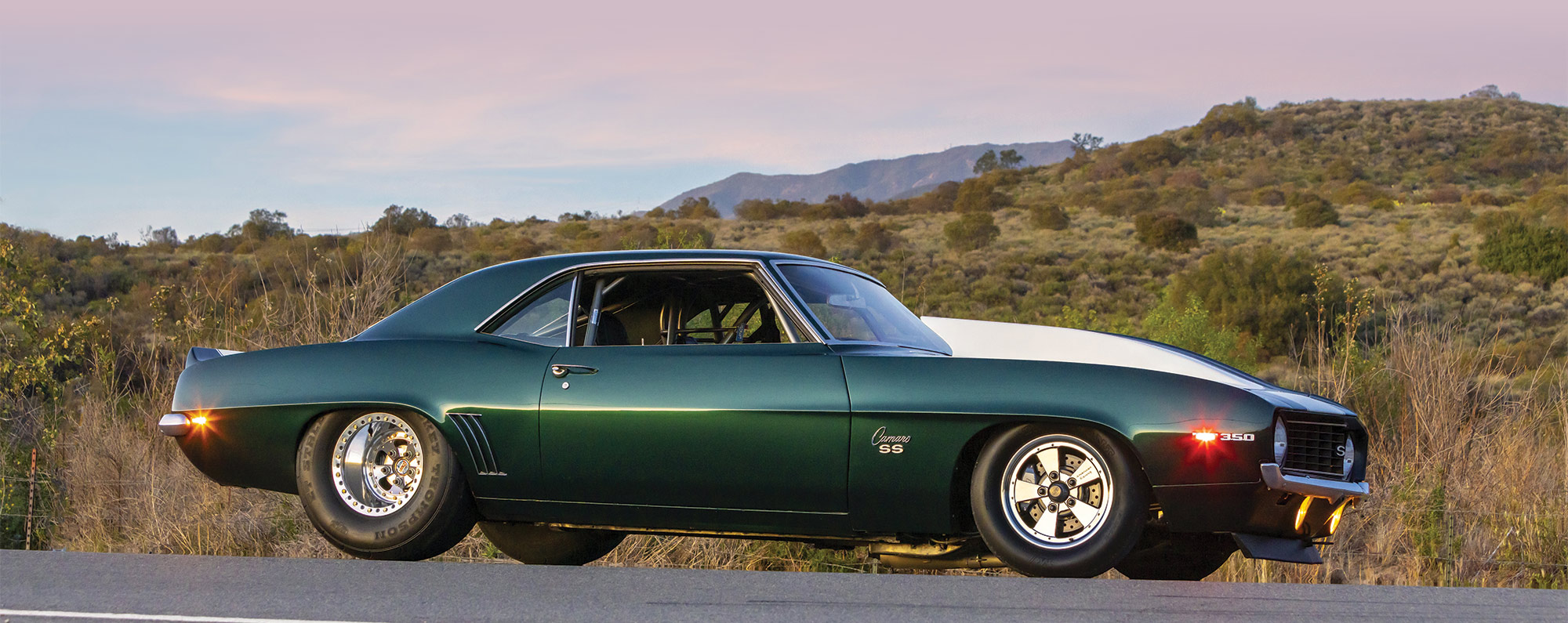 FEATURE
FEATURE
 Photography by Wes Allison
Photography by Wes AllisonLike many of us who grew up in the ’70s, playing with toy and model cars were the gateway to one day having the real thing. “As a kid, I loved playing Hot Wheels with all the neighborhood kids and my two brothers,” Doug recalls. “We’d play with those cars all day long.”
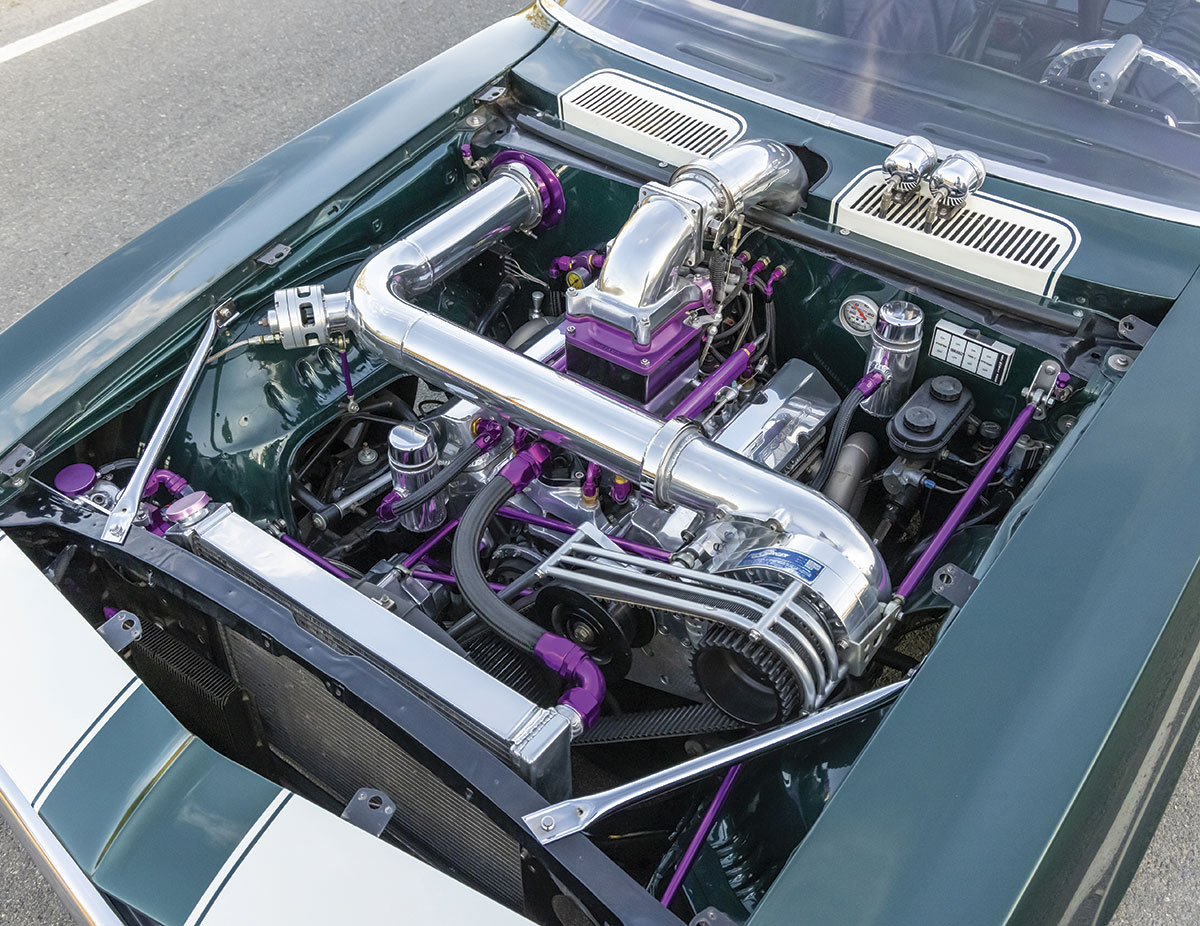
With his sights firmly set, Doug was lucky enough to have an understanding mom—an enabler of sorts. Actually, she was a full-on co-conspirator in Doug’s quest to find a Camaro. “My mom would shuttle us around and whenever I saw a ’69 Camaro in a parking lot she would pull over for me while I’d try to hunt down the owner to dig up information and ask if the car was for sale,” Doug tells. “The result was me having a lot of names and inventory of potential cars for sale in my town. I was clearly a car stalker before that was a term.
“On a random trip around town, I spotted this ’69 in the parking lot of a hair cutting shop. I spoke with the lady who worked there and found out she was the owner of the car and said she and her husband had just been talking about selling the car the night before. The Camaro had just been painted dark green with white stripes and had a stock 350, headers, and a 12-bolt rearend. Fortunately, I was able to strike a deal with them on the car, then I talked my parents into paying half and I the other. I finally had the car of my dreams.”
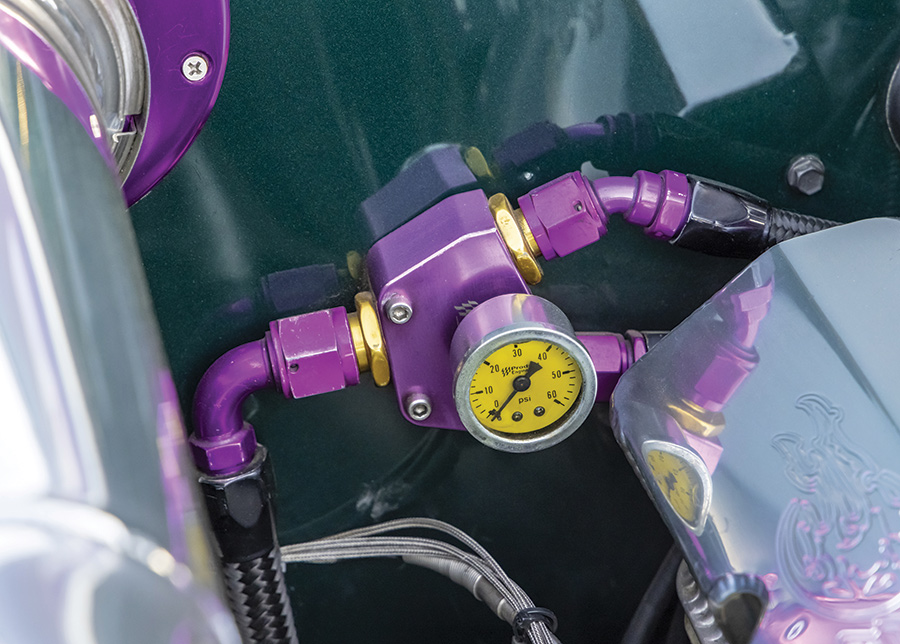
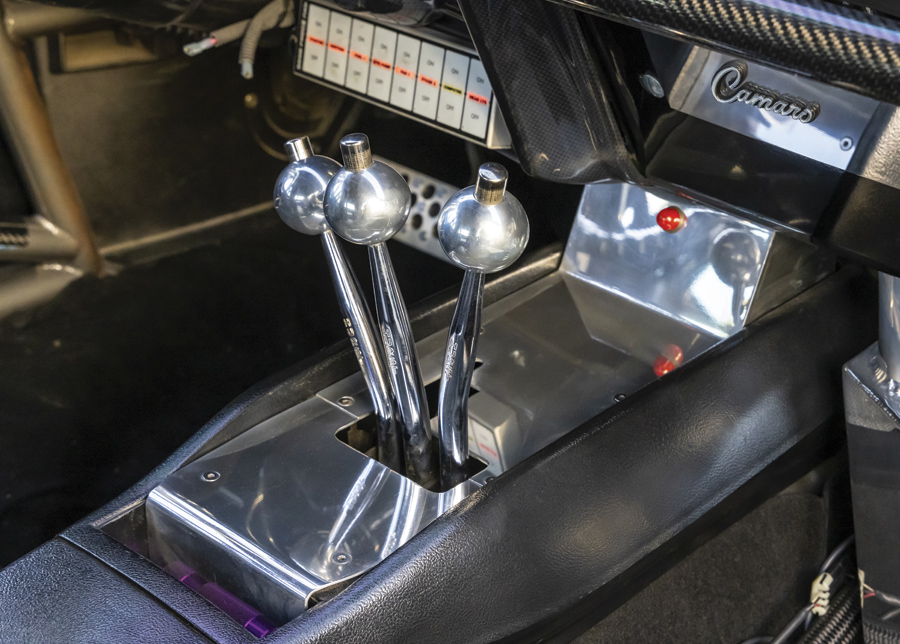

Vehicle: ’69 Chevy Camaro SS
Type: Katec Bowtie Raceshop small-block
Displacement: 434 ci
Compression Ratio: 9.25:1
Bore: 4.155 inches
Stroke: 4.00 inches
Cylinder Heads: AFR
Rotating Assembly: LA Enterprises Kryptonite crankshaft, Manley connecting rods, and Wiseco pistons
Camshaft: Cam Motion (specs proprietary)
Induction: Edelbrock Victor Series manifold, Accufab 102mm throttle body, ProCharger F3 supercharger
Beltdrive: ProCharger carbon fiber
Assembly: Craig Reeds High Performance (Fullerton CA)
Exhaust: Lemons custom step headers, 2½- to 2¾- to 4-inch collectors-inch headers, Dynomax Bullet mufflers
Ancillaries: CSI remote-mount water pump, Be Cool aluminum radiator, Powermaster alternator, custom 7-gallon fuel cell, Custom Force Fed Performance valve covers, Product Engineering fuel system
Output: 1,320 rwhp at 7,400 rpm
Transmission: Turbo 400 assembled by Craig Reeds High Performance (Fullerton), custom-built manual 210 low First gear, Hurst Lightning Rods shifter
Driveshaft: American Driveline chromoly
Rear Axle: Custom-fabricated 9-inch rearend, 3.90 gears, Currie 40-spline axles, Mark Williams Spool
Front Suspension: Stock front subframe with TRZ upper and lower control arms
Spindles: Classic Performance Products 2-inch drop
Shocks: Koni front and rear
Steering: Flaming River rack-and-pinion
Rear Suspension: Back half with four-link
Brakes: Lamb components 12-inch rotors front, Aerospace Components 11-inch rotors rear
Brake Master: Wilwood
Wheels: American Racing Pro Series 15×3 front, 15×12 rear
Tires: Mickey Thompson ET 25×4.5R15 front, Mickey Thompson ET Drag Radials 315/60R15 rear
Upholstery: Black loop carpet, factory door panels
Seats: Kirkey
Harness: Five-point Sparco
Steering Wheel: Budnik
Shifter: Hurst Lightning Rods
Dash: Carbon fiber
Instrumentation: Racepak, Stewart-Warner Ultra-Shift light, Auto Meter fuel pressure and oil pressure gauges
HVAC: Nope
Rollcage: Nates Race Cars chromoly certified to 6.50 e.t.’s
Paint: Dark green with white stripes
Hood: Glastek 6-inch cowl
Taillights: Marquez
Bumpers: Factory
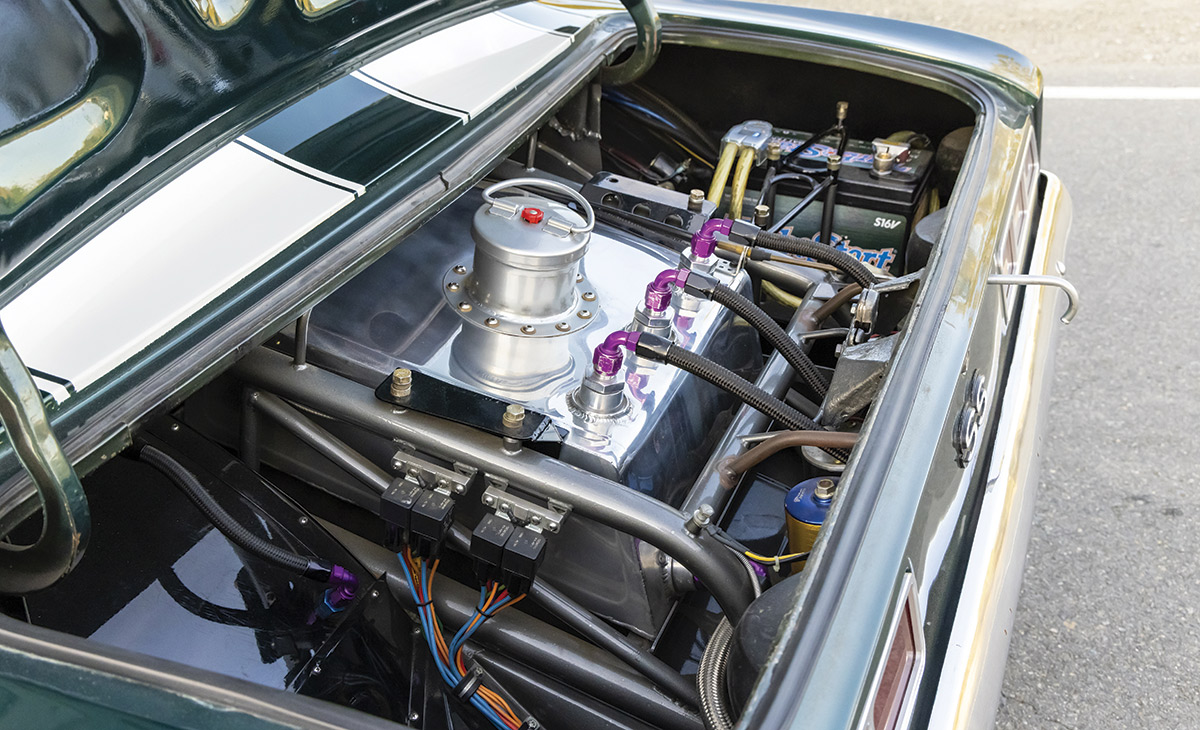
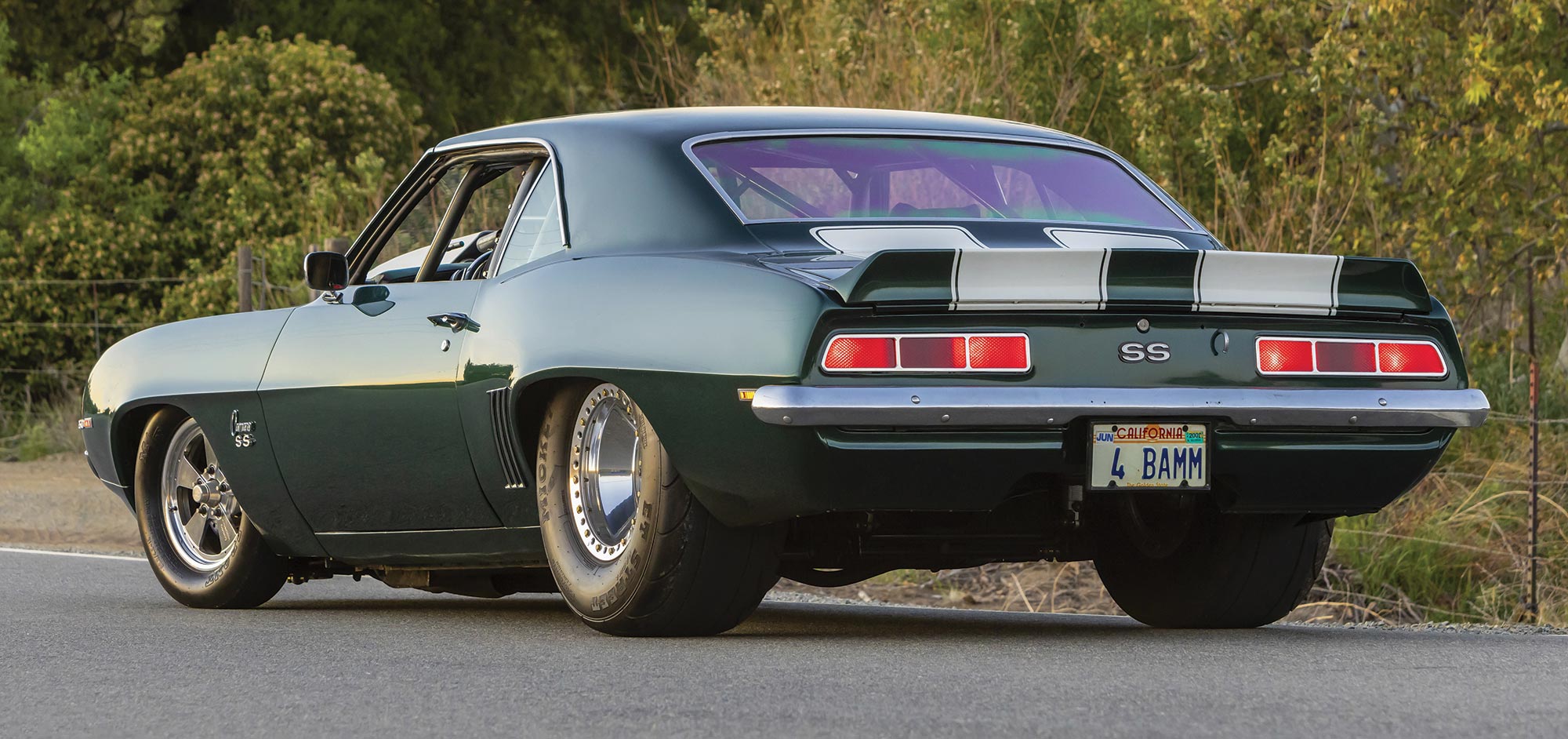
The modifications started out small and innocent—innocent to Doug, at least. He replaced a leaky thermostat at about six months in, then he and his high school buds installed a cam and an Edelbrock Torquer manifold with an adaptor to run a Quadrajet carburetor along with a Pete Jackson geardrive. Not long after, a Hurst Lightning Rods shifter made its way in the car. “A few months later I was running mid 13s at 106 mph at the strip. That setup got me major ‘street cred’ in my small NorCal town as I was beating alleged 10-second muscle cars by two to three car lengths.” It wasn’t long after that at least six other local cars were running geardrives, some with Lightning Rods.
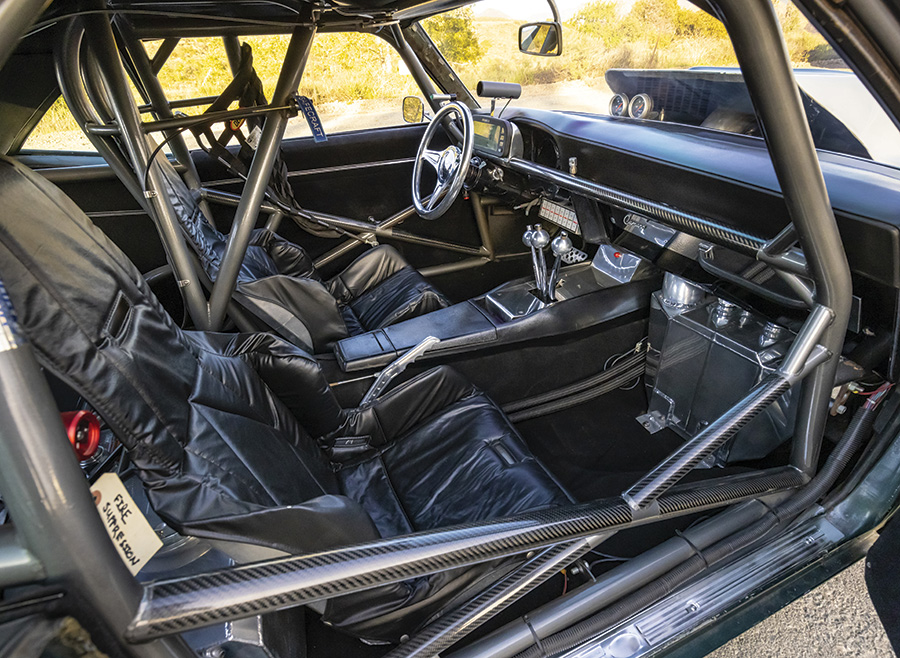
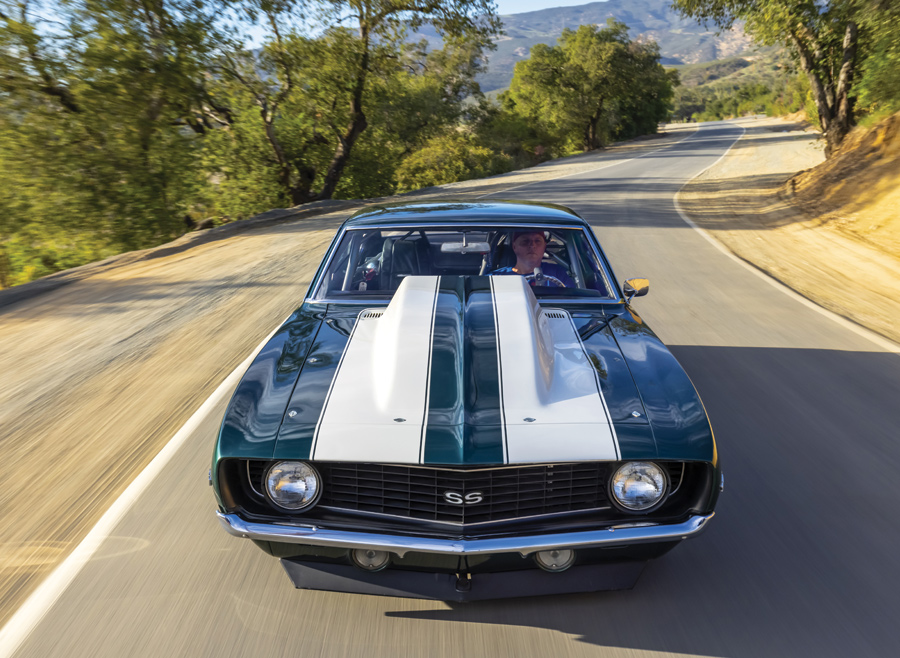
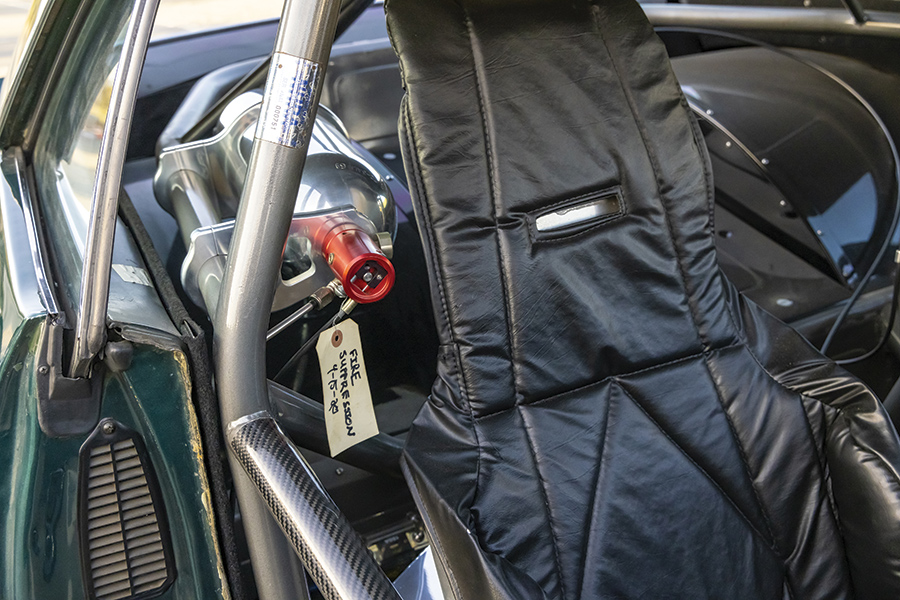

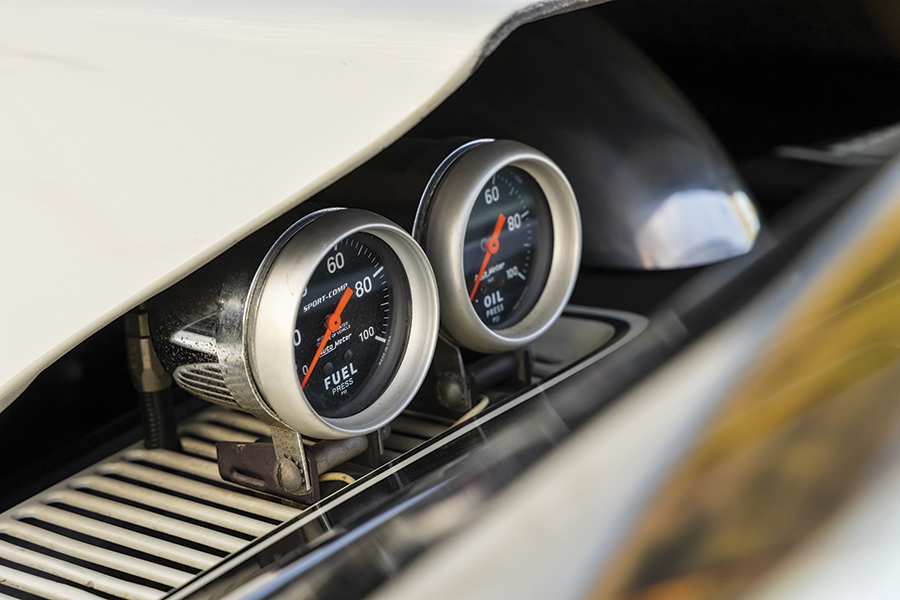
Doug confirms the car’s current engine combination lacks streetability, so he’s setting aside funds for a blown-and-injected Tom Nelson “Imposter” big-block. It sounds like a monster, which it is, but that engine has the capability to be street driven–something Doug has wanted for a long time.
Doug mentioned this being his favorite ’69 Camaro, so does that mean he has another? Yep, he’s got a Pro Touring ’69 Camaro in the works that’s just about ready to hit the streets, so we’re going to assume that one is his second favorite, but we’re sure he spends an equal amount of time with both.
